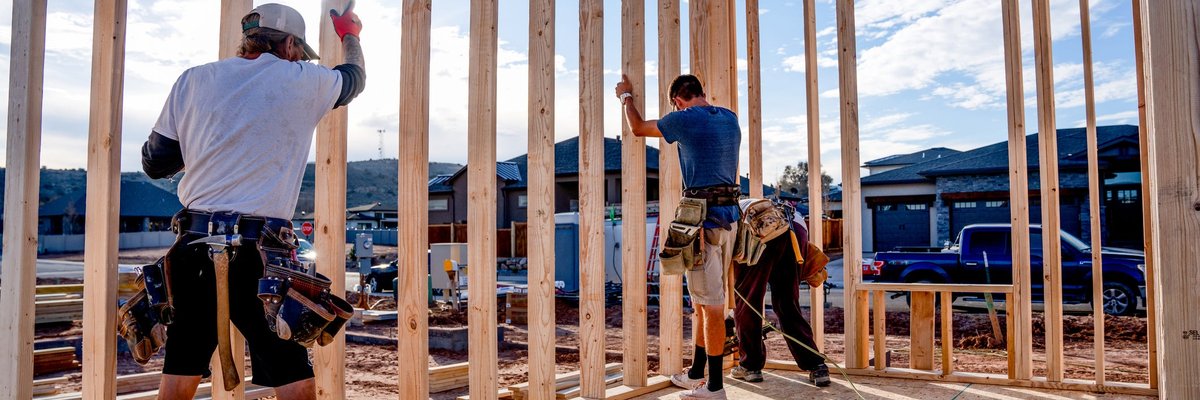The U.S. Is Building Homes at the Fastest Rate Since 2006. Will Prices Finally Come Down?
KEY POINTS
- New housing starts unexpectedly rose 3.9% from the previous year, marking the fastest pace of construction in 16 years.
- Building permits have also risen, indicating that homebuilders are trying to meet demand.
- An increase in supply and higher mortgage costs may slow down the housing market.
With more homes being built, what will this mean for home prices?
According to the Commerce Department, U.S. homebuilding starts unexpectedly rose in March by 3.9% from the previous year. U.S. housing starts were at a seasonally adjusted annual rate of 1,793,000 compared to 1,725,000 in March 2021. This may be the break that prospective homeowners need.
Biggest increase in multi-family units
The biggest jump was for multi-family units, which are units in buildings with five or more residences. The annual pace of construction in March 2022 was 574,000 units, 28.1% higher than the 448,000 units in March 2021. The percent change from the previous month of 534,000 is 7.4% higher.
Single-family construction slowed, dropping from an annual pace of construction of 1,221,000 units in February to 1,200,000 units in March. Single-family homes make up the largest share of homebuilding.
Building permits rise
Building permits are a leading indicator for residential construction. Building permits in March were at a seasonally adjusted annual rate of 1,873,000. This is an increase of 6.7% from the March 2021 number of 1,755,000 and 0.4% above the previous month’s rate of 1,865,000.
These numbers show that homebuilders are increasing supply to meet demand. With a tight housing market, homebuilders are likely to continue applying for building permits and building new homes. There is less risk that homes or multi-family units will be vacant. With increasing demand, there is a record backlog of houses approved for construction but have not started yet.
Mortgage rates expected to continue rising
While the report is a welcome sign for prospective buyers, mortgage rates are continuing to rise at the fastest pace in nearly four decades. The 30-year fixed-rate mortgage currently averages 5.10%, the highest since April 2010. Mortgage rates have climbed nearly 2 percentage points since January. In addition to rising mortgage costs, the median home price hit an all-time high of $375,000 in March.
Home prices have skyrocketed by 20% in the past year. Dwindling supply and buyers looking to close deals before mortgage rates rise have fueled the dramatic price increases. According to the National Association of Realtors (NAR), purchasing a home now is 55% more expensive than a year ago.
With the Federal Reserve recently announcing the 0.50% rate increase and its decision to sell its holdings of mortgage-backed securities, mortgage rates are expected to continue rising. As a result, home affordability has become a major issue. According to the Mortgage Bankers Association, mortgage applications have fallen to their lowest level since 2018. The combination of more homes being built and slowing demand may slow home price appreciation. This may be a sign that home-buying nightmares from the last couple of years may not be as bad in the upcoming year.
Our Research Expert
We're firm believers in the Golden Rule, which is why editorial opinions are ours alone and have not been previously reviewed, approved, or endorsed by included advertisers. Motley Fool Money does not cover all offers on the market. Motley Fool Money is 100% owned and operated by The Motley Fool. Our knowledgeable team of personal finance editors and analysts are employed by The Motley Fool and held to the same set of publishing standards and editorial integrity while maintaining professional separation from the analysts and editors on other Motley Fool brands. Terms may apply to offers listed on this page.



